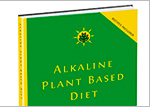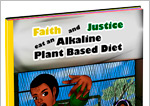Foods That Help Treat Glaucoma
We need not overlook any natural methods that can help treat glaucoma, so that means we need to look at foods that can help treat glaucoma as well as any medical treatments. I firmly believe our medicine lies in our foods, though this is not a popular thought in Western medicine. Western medicine looks first at isolating components in a lab before it looks at and promotes naturally occurring compounds that can support our health.
Glaucoma is no different. Glaucoma is the leading cause of legal blindness in African American women, and the second leading cause of legal blindness in white American women. We should look at all possible treatments, especially treatments that cost very little money like small changes in diet.
Researchers found that plant-based foods helped lower the risk of glaucoma. Not all plant-based foods are equal though and some treat certain ailments better than others. Two vegetables that stand out in treating glaucoma are kale and collard greens.
It is believed that phytonutrients, like zeaxanthin, are the main eye protective agents in kale and collard greens that help protect against glaucoma. Studies found “just two or three servings a month was associated with half the risk of glaucoma compared to once a month or less.”
Two things are important here. One, a steady increase of the consumption of kale or collard greens protects against glaucoma. Instead of just having two or three serving a month, try making kale consumption a staple of the diet.
Two, we need to consume these protective phytonutrients as part of whole foods and not in isolation or as isolated nutrient supplements. Case in point, consuming a few oranges a weeks dramatically lowered the risk of glaucoma, and consuming fresh peaches also had the same effect. Drinking orange juice or peach juice was not associated with a lowered risk of glaucoma though.
The same goes for isolated nutrient supplements. They just don’t have the same effect on the body as eating the whole fruit. The natural fiber that is discarded in the juices interacts with the phytonutrients and makes them protective against glaucoma.
Phytonutrients like zeaxanthin in kale and collard greens also become more bioavailable to the body when they are consumed with a fats like nuts or tahini sauce.
An excellent way to get concentrated amounts of kale into the diet with increased bioavailability would be to drink the Bam Bam vegetable juice that contains kale and flax seeds to help improve the bioavailability of its phytonutrients.
Dr. Greger made it at point to note “calcium or iron supplements may even be doubling, quadrupling, or septupling their odds of glaucoma.” Instead of using isolated nutrients supplements, it is best to get our nutrients from our food.
An interesting note is the betacarotene in carrots is not as eye protective as once was thought, and is less protective against glaucoma in black American women than in white American women.
It is better to make, kale, collard greens, oranges, and peaches a staple of the diet to saturate the body with their eye protecting phytonutrients and give yourself the best chance in fighting and controlling glaucoma.

Tags: glaucoma






